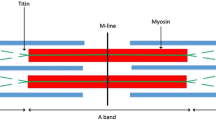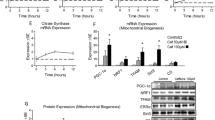Summary
Forskolin, a commonly used adenylate cyclase activator, was found to inhibit reversibly the carbachol-induced ion-translocating capacity of the nicotinic acetylcholine receptor (nAChR) on chick myotubes in a dose- (IC50 = 20 μM) and time-dependent manner. This effect was not correlated to increases in cellular cAMP. Forskolin, at a concentration (50 μM) that totally blocked the carbachol-induced 86Rb influx, caused no change in carbachol or α-bungarotoxin binding to chick myotube nAChR in situ. In contrast, in the presence of carbachol, forskolin inhibited (IC50 = 10 μM) the binding of 3H-phencyclidine, a putative nAChR ion-channel ligand, to Torpedo microsac nAChR. Inhibition of 3H-phencyclidine binding in the absence of carbachol was not complete. Membrane leakage studies on myotubes, measuring 3H-efflux from 2-deoxy-d(1-3H)-glucose loaded cells and electrophysiological measurements of membrane properties supported the interpretation that forskolin induced decreases in plasma membrane permeability. In conclusion, forskolin blocks the carbachol-mediated increase in permeability of the nAChR channel by (1) binding to the ion-channel (open state) and (2) generally perturbing the plasma membrane function possibly by interfering with the protein-lipid interface.
Similar content being viewed by others
References
Aguayo LG, Witkop B, Albuquerque EX (1986) Voltage- and time-dependent effects of phencyclidines on the endplate current arise from open and closed channel blockade. Proc Natl Acad Sci USA 83:3523–3527
Albuquerque EX, Eldefrawi AT, Eldefrawi ME, Mansour NA, Tsai M-C (1978) Amantadine: Neuromuscular blockade by suppression of ionic conductance of the acetylcholine receptor. Science 199:788–790
Albuquerque EX, Tsai M-C, Aronstam RS, Eldefrawi AT, Eldefrawi ME (1980) Sites of action of phencyclidine. II. Interaction with the ionic channel of the nicotinic receptor. Mol Pharmacol 18:167–178
Albuquerque EX, Deshpande SS, Aracava Y, Alkondon M, Daly JW (1986) A possible involvement of cyclic AMP in the expression of desensitization of the nicotinic acetylcholine receptor. FEBS Lett 199:113–120
Catterall WA (1975) Sodium transport by the acetylcholine receptor of cultured muscle cells. J Biol Chem 250:1776–1781
Eldefrawi ME, Eldefrawi AT, Aronstam RS, Maleque M, Warnick JE, Albuquerque EX (1980) 3H-phencyclidine: A probe for the ionic channel of the nicotinic receptor. Proc Natl Acad Sci USA 77:7458–7462
Eldefrawi AT, Miller ER, Murphy DL, Eldefrawi ME (1982) 3H-phencyclidine interactions with the nicotinic acetylcholine receptor channel and its inhibition by psychotropic, antipsychotic, opiate, antidepressant, antibiotic, antiviral and antiarrhythmic drugs. Mol Pharmacol 22:72–81
Häggblad J, Eriksson H, Heilbronn E (1985) Oxotremorine acts as a partial nicotinic agonist on cultured chick myotubes. Acta Pharmacol Toxicol (Copenh) 57:317–321
Hedlund B, Århem P, Lorentz M, Sydbom A (1986) Non-muscarinic effects of scopolamine on N1E-115 neuroblastoma cells. Acta Physiol Scand (in press)
Heidmann T, Oswald RE, Changeux J-P (1983) Multiple sites of action of noncompetitive blockers on acetylcholine receptor-rich membrane fragments from Torpedo marmorata. Biochemistry 22:3112–3127
Heilbronn E, Eriksson H, Häggblad J (1986) cAMP-dependent phosphorylation of the nicotinic acetylcholine receptor: characterization of the protein kinase in Torpedo electric organ, lack of correlation in myotubes between increased levels of cAMP and influx of monovalent ions, block of influx by forskolin independently of cAMP-levels. In: Maelicke E (ed) Nicotinic acetylcholine receptor: Structure and function. Springer, Berlin Heidelberg New York, pp 291–303
Lindstrom J, Einarson B, Tzartos S (1981) Production and assay of antibodies to the acetylcholine receptors. In: Langone SS, Van Vunakis H (eds) Methods in enzymology, vol 74. Academic Press, New York, pp 432–460
Lowry OH, Rosebrough NJ, Farr AL, Randall RJ (1951) Protein measurement with the Folin phenol reagent. J Biol Chem 193:265–275
Manning AS, Kinoshita K, Buschmans E, Coltart DJ, Hearse DJ (1985) The genesis of arrhythmias during myocardial ischaemia. Dissociation between changes in cyclic adenosine monophosphate and electrical instability in the rat. Circ Res 57:668–675
McHugh EM, McGee R Jr (1986) Direct anaesthetic-like effects of forskolin on the nicotinic acetylcholine receptors of PC 12 cells. J Biol Chem 261:3103–3106
Middleton P, Jaramillo F, Schuetze SM (1986) Forskolin increases the rate of acetylcholine receptor desensitization at rat soleus endplates. Proc Natl Acad Sci USA 83:4967–4971
Nastuk WL, Su PC, Doubilet P (1976) Anticholinergic activities of amantadine in neuromuscular transmission. Nature 264:76–79
Oswald RE (1983) Effects of calcium on the binding of phencyclidine to acetylcholine receptor-rich membrane fragments from Torpedo californica electroplaque. J Neurochem 41: 1077–1084
Oswald RE, Changeux J-P (1981) Ultraviolet light-induced labeling by non-competitive blockers of the acetylcholine receptor from Torpedo marmorata. Proc Natl Acad Sci USA 78:3925–3929
Oswald RE, Heidmann T, Changeux JP (1983) Multiple affinity states for noncompetitive blockers revealed by 3H-phencyclidine binding to acetylcholine receptor rich membrane fragments from Torpedo marmorata. Biochemistry 22:3128–3136
Schimerlik M, Quast U, Raftery MA (1979) Ligand induced changes in membrane-bound acetylcholine receptor observed by ethidium fluorescence. 1. Equilibrium studies. Biochemistry 18:1884–1890
Seamon KB, Daly JW (1983) Forskolin, cyclic AMP and cellular physiology. Trends Pharmacol Sci 4:120–123
Walum E (1982) Membrane lesions in cultured mouse neuroblastoma cells exposed to metal compounds. Toxicology 25:67–74
Warnick JE, Maleque MA, Bakry N, Eldefrawi AT, Albuquerque EX (1982) Structure-activity relationships of amantadine. I. Interaction of the N-alkyl analogues with the ionic channels of the nicotinic acetylcholine receptor and electrically excitable membrane. Mol Pharmacol 22:82–93
Whetton AD, Needham L, Dodd NJF, Heyworth CM, Houslay MD (1983) Forskolin and ethanol both perturb the structure of liver plasma membranes and activate adenylate cyclase. Biochem Pharmacol 32:1601–1608
Author information
Authors and Affiliations
Additional information
Send offprint requests to Johan Haggblad
Rights and permissions
About this article
Cite this article
Häggblad, J., Eriksson, H., Hedlund, B. et al. Forskolin blocks carbachol-mediated ion-permeability of chick myotube nicotinic receptors and inhibits binding of 3H-phencyclidine to Torpedo microsac nicotinic receptors. Naunyn-Schmiedeberg's Arch Pharmacol 336, 381–386 (1987). https://doi.org/10.1007/BF00164869
Received:
Accepted:
Issue Date:
DOI: https://doi.org/10.1007/BF00164869




